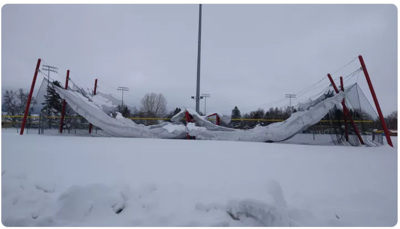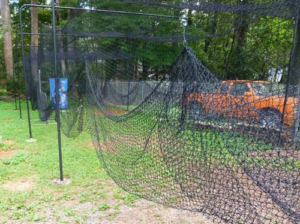What happens when you build a cheap batting cage?
Hey there, baseball fans! Have you ever thought about building a batting cage in your backyard or for your team—but cringed at the cost? It’s tempting to cut corners and save a few bucks, but what really happens when you build a cheap batting cage?
Many people make compromises to save money, but those decisions often lead to common mistakes that cost more in the long run. Let’s break down the real consequences of building a low-quality batting cage—and why it’s worth investing a little more upfront for better safety, performance, and durability.
⚡ Initial Excitement & Quick Setup
At first, going cheap can feel like a win. The cage looks decent, it’s up fast, and your bank account isn’t crying. You’re excited and ready to swing—but that honeymoon phase fades quickly.
Without a solid plan and quality materials, early excitement turns into frustration. Instead, start with a smart approach using our backyard batting cage guide to map out a plan that lasts.
🧱 Durability Issues
The first cracks in the budget build? Durability. Cheap netting frays. Lightweight poles bend. Weak anchors wobble in the wind. The whole setup becomes a maintenance nightmare.
A CageList user shared how their backyard cage started falling apart after just a few weeks. The net tore, the frame shook with every swing, and the cage quickly became more frustrating than fun.
Instead, choose high-quality netting and weather-resistant materials built to last—especially for outdoor setups.

🚧 Safety Concerns
Safety should always come first—especially when kids are involved. Unstable frames and loose netting are major hazards. A cage collapse can result in serious injuries.
Spending a bit more on sturdy materials and proper installation helps create a safe, secure environment where players can focus on development—not danger. Check out our Ultimate Backyard Batting Cage Guide for best practices.

🎯 Performance Impacts
A flimsy batting cage can hurt your training. If the net sags or the frame shakes, you’ll be distracted—and that affects your timing, rhythm, and overall confidence.
To get the most from every swing, build a cage that mirrors a pro setup. It doesn’t have to break the bank, but it should be sturdy and reliable. Learn more in our Batting Cage Size Guide.

💸 Hidden Costs Add Up
What looks cheap upfront can cost you more down the road. Constant repairs, replacements, and safety concerns add up—and sometimes faster than you think.
One of our neighbors shared how their initial $1,000 cage turned into a $3,000 headache after constant part swaps and patch jobs. That doesn’t include the time wasted or the stress involved.
If you’re thinking about renting your cage, that’s even more reason to build with quality. Check out the current batting cages in Georgia to see what high-performing listings include.
✅ Final Thoughts: Invest in Quality
So, what happens when you build a cheap batting cage?
- ⚠️ You run into frequent durability issues
- ⚠️ Safety becomes a concern
- 🎯 Training suffers
- 💸 Hidden costs sneak up on you
Whether you’re building for your kids, your team, or future rentals, quality matters. A little more investment up front will pay off with fewer headaches and a much better experience overall.
Next time you’re considering a batting cage, remember: quality over shortcuts. Your swing—and your future self—will thank you.
💼 Want to Earn Money With Your Cage?
If you already own a batting cage—or are planning to build one—you can list your cage on CageList and rent it out to local players, parents, and teams. The better the quality and safety, the more you can charge per hour.
Explore active listings in states like Texas, California, and Florida to see what’s working—and what you could earn.
Need tips, feedback, or community support? Join our Backyard Batting Cages Facebook group and subscribe to the CageList blog to learn from other cage owners and builders around the country.
